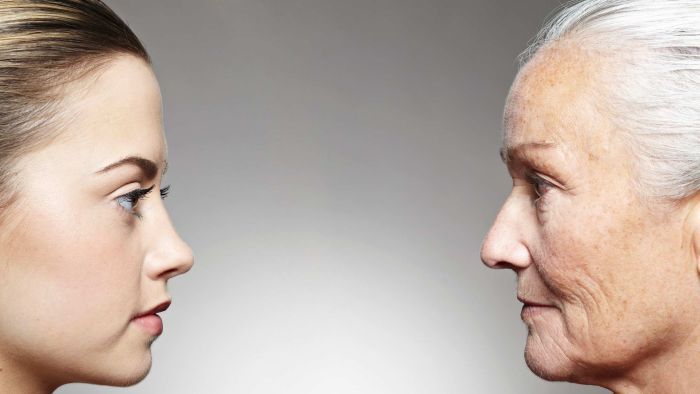The Lazarus Effect.
Category: life extension – Page 478
Michael Greve at Ending Age-Related Diseases 2019
At Ending Age-Related Diseases, Michael Greve discussed the Forever Healthy Foundation and its Rejuvenation Now initiative along with the current state of rejuvenation biotechnology, including companies and therapies, and a direction for the future of this emerging industry.
See Forever Healthy’s Rejuvenation Now initiative at https://forever-healthy.org/en/initiatives/rejuvenation-now/
►Subscribe for more: https://www.youtube.com/user/LifespanIO?sub_confirmation=1
►This video is presented by LEAF. Please support our work by becoming a Lifespan Hero: http://lifespan.io/hero
#Rejuvenation #Biotechnology #EARD2019

Robotic Neck Brace Dramatically Improves Functions of ALS Patients
New York, NY—August 12, 2019—A novel neck brace, which supports the neck during its natural motion, was designed by Columbia engineers. This is the first device shown to dramatically assist patients suffering from Amyotrophic Lateral Sclerosis (ALS) in holding their heads and actively supporting them during range of motion. This advance would result in improved quality of life for patients, not only in improving eye contact during conversation, but also in facilitating the use of eyes as a joystick to control movements on a computer, much as scientist Stephen Hawkins famously did.
A team of engineers and neurologists led by Sunil Agrawal, professor of mechanical engineering and of rehabilitation and regenerative medicine, designed a comfortable and wearable robotic neck brace that incorporates both sensors and actuators to adjust the head posture, restoring roughly 70% of the active range of motion of the human head. Using simultaneous measurement of the motion with sensors on the neck brace and surface electromyography (EMG) of the neck muscles, it also becomes a new diagnostic tool for impaired motion of the head-neck. Their pilot study was published August 7 in the Annals of Clinical and Translational Neurology.
The brace also shows promise for clinical use beyond ALS, according to Agrawal, who directs the Robotics and Rehabilitation (ROAR) Laborator y. “The brace would also be useful to modulate rehabilitation for those who have suffered whiplash neck injuries from car accidents or have from poor neck control because of neurological diseases such as cerebral palsy,” he said.
Open Mic Night at Perpetual Life
Open Microphone night at Perpetual Life. Watch everyone discuss their latest ideas on Health and Extreme Longevity. Afterward, a short movie about RAADfest. Check it out. www.raadfest.com

Age Reversal, Life Extension, & the Elimination of Chronic Degenerative Diseases w/Ira Pastor
Download the FREE PDF:
http://trtrevolution.com/PDF
Learn more about Optimizing Your Health, Reversing Your Aging Process and All Things Testosterone and TOT: http://trtrevolution.com/.
To Get Your FREE Paperback copy of the Amazon Best Selling TRT MANual:(Continental USA Only)
http://trtrevolution.com/book
To Listen to the Audio Version of The TRT MANual
http://amzn.to/2exRnf7
When it comes to age reversal and complex regeneration in humans, a basin of research has been put in front of us. How much do we know about the brain, consciousness, and death reversal? As Big Pharma makes a trillion dollars annually, are they interested in finding cures? What valuable lessons are we learning from evolution?
On this episode, we have an in-depth conversation about exciting developments in biology with Bioquark CEO, Ira Pastor.
The photo points to the page for good reason
Both recent new Kindle books (will be paperbacks also in time) concern the two streams of this project. Primal Eye 1979–2019 outlines circuit designs and hard considerations and outlines MVT Posthuman Psychology. The other Kindle book — ZENET Game of Immortality — details some of the gaming and soft matters.
Everybody isn’t going to live forever even given new genetic techniques and improved medicines. When you reach a terminal state beyond medical science, the only options seem cryogenic preservation, actual death, or Artificial-Death. PRIMAL EYE 40 years on (1979 to 2019) includes Conscious Circuits, Artifical-Death and Posthuman Psychology.
The Rejuvenation Now Project Launches
The Forever Healthy Foundation has recently launched the Rejuvenation Now project, and it has just published a detailed analysis of NAD+ repletion therapies, providing the first scientific overview of this particular approach and of the supplements currently available.
One industry, two types of people
The field of aging research with an aim to rejuvenating the aging body in order to delay, prevent, or reverse age-related diseases is a field divided into two.
New song about life extension: Philosophic Warfare
A new song from activists of the movement for indefinite life extension is out, from the album Faultline Shift.
The song is called Philosophic Warfare. It is a contemplation of the dismal reality of being trapped by death and what it all means followed by a change to affirmation of beating it.
It is true, we are always on the climb. Having kicked the grim reaper off its mountain, it is now itself on the defense, struggling to match our force.